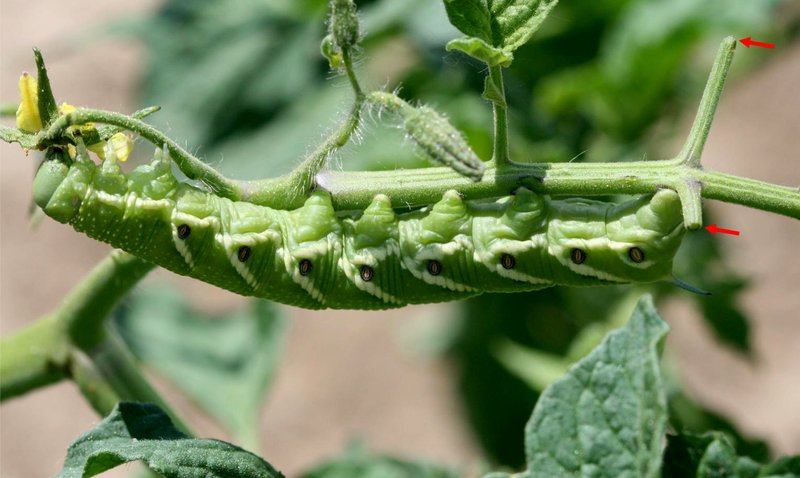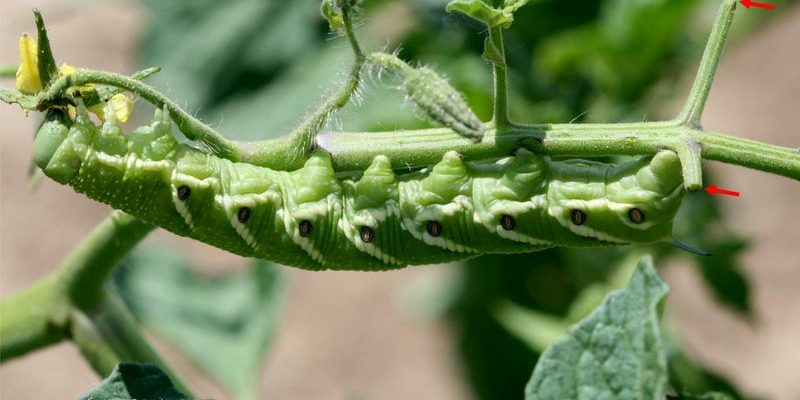
So, how does crop rotation actually work? Great question! Essentially, it involves changing the types of plants you grow in a specific area each season. This simple strategy not only helps prevent pest infestations but can also improve soil health. With a little thought and planning, you can create a thriving garden that’s less inviting for those pesky hornworms.
Let’s dig deeper into the connection between hornworms and crop rotation. We’ll explore how this practice can be beneficial and what it means for your garden.
What Are Hornworms?
Hornworms are the larvae of moths, usually the Five-Spotted Hawkmoth or the Tomato Hornworm. If you’ve spotted a plump, green caterpillar on your tomato plants, it’s likely one of these. They can grow up to 4 inches long and are pretty impressive in size, but that’s not what we want in the garden, right?
These pests have a voracious appetite and can strip your plants bare in a matter of days. They typically blend in well with the leaves due to their green color, making them tricky to spot. It’s like playing hide-and-seek in the garden—except you’re the seeker and they’re the masters of disguise.
Understanding the life cycle of hornworms is key. They hatch from eggs laid by moths, start feeding on plants, and then pupate. Knowing this pattern can help you anticipate their arrival and manage your garden better.
How Does Crop Rotation Work?
Crop rotation is an age-old practice that involves growing different types of crops in the same area across different seasons. It’s a bit like taking a different route to work each day; it keeps things fresh and prevents problems from building up.
For instance, if you grow tomatoes in one area this year, you might plant peppers next year and follow up with carrots the year after. This kind of rotation disrupts the life cycles of pests like hornworms, making it harder for them to find their favorite snacks year after year. They can’t complete their life cycle if their preferred food source isn’t available.
But it’s not just about pest control! Crop rotation also enriches the soil. Different plants have varying nutrient needs, and rotating them can help replenish the nutrients in the soil, leading to healthier plants overall.
Benefits of Crop Rotation for Managing Hornworms
The benefits of crop rotation extend beyond just confusing those hungry hornworms. Here’s a breakdown of why this practice is so effective:
- Pest Management: By rotating your crops, you reduce the likelihood of hornworm populations building up in one area. If they can’t find their host plants, they’ll move on—hopefully to someone else’s garden!
- Soil Health: Different plants bring different nutrients to the soil. For example, legumes add nitrogen, while leafy greens might pull in other essential nutrients. Healthy soil means robust plants that can better withstand pests.
- Disease Prevention: Many pests thrive in soil that’s been home to the same plants season after season. Crop rotation can help break the cycle of diseases that affect specific crops, further protecting your garden.
Honestly, who wouldn’t want to keep their garden thriving while reducing the chance of pest invasions?
Creating a Crop Rotation Plan
Alright, so you’re sold on crop rotation. But how do you create an effective plan? Here’s a simple roadmap to get started:
1. Identify Your Plants: Make a list of the crops you want to grow and categorize them. You might have categories like nightshades (tomatoes, peppers), legumes (beans, peas), and root vegetables (carrots, beets).
2. Plan Your Seasons: Decide which types of crops you want to plant each season. Rotate your crops based on their categories. For example, if you plant tomatoes one year, follow it up with legumes the next year and then root vegetables.
3. Keep Records: It’s helpful to keep track of what you planted where each season. A simple notebook or a gardening app can be your best friend here.
4. Stay Flexible: Sometimes, weather or other factors might require you to tweak your plan. That’s okay! The more adaptable you are, the better your garden will thrive.
By following these steps, you’re setting yourself up for a garden that’s not just resilient against hornworms, but also flourishing and productive.
Alternatives to Crop Rotation
While crop rotation is one of the best strategies to deal with hornworms, it’s not your only option. Here are a couple of alternatives you might consider:
- Companion Planting: Some plants naturally deter pests. For example, marigolds can repel hornworms when planted alongside tomatoes. It’s like inviting a friend to your party who doesn’t get along with the rowdy guests!
- Natural Predators: Encouraging birds and other natural predators can help keep hornworm populations in check. You can attract them by providing birdhouses or planting flowers that bring in beneficial insects.
These alternatives can complement your crop rotation strategy, giving you even more tools to protect your garden.
Dealing with hornworms in your garden can feel overwhelming, but crop rotation offers a practical and effective solution. By changing the types of plants you grow from season to season, you can confuse these pests and improve the health of your soil. With thoughtful planning, you’re not just keeping hornworms at bay; you’re also nurturing a thriving garden that yields fresh produce season after season.
You might be surprised by how much of a difference crop rotation can make. So grab a notebook, sketch out your garden plan, and get ready to enjoy the fruits—literally—of your labor while keeping those pesky hornworms at bay! Happy gardening!

